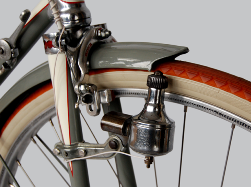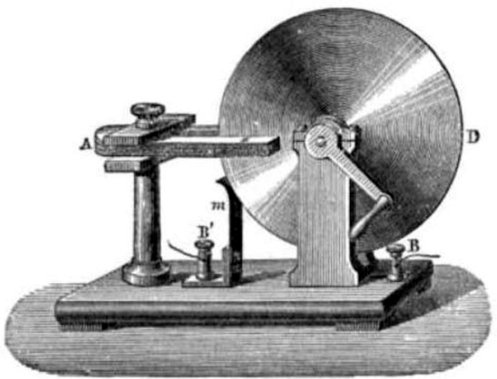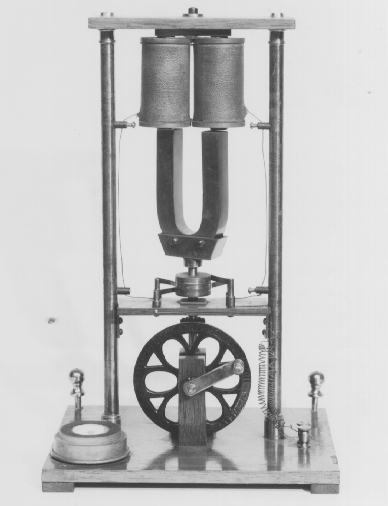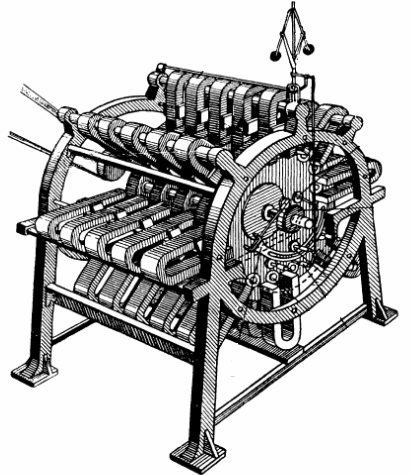Categories: Featured Articles » Interesting Facts
Number of views: 13929
Comments on the article: 1
What is a dynamo machine. The first DC generators
 The dynamos in the century before last began to be called direct current generators, the first industrial generators that were later replaced by alternating current generators suitable for conversion by transformers, and extremely convenient for long-distance transmission with little loss.
The dynamos in the century before last began to be called direct current generators, the first industrial generators that were later replaced by alternating current generators suitable for conversion by transformers, and extremely convenient for long-distance transmission with little loss.
Today, the word "dynamo", as a rule, means small bicycle generators (for headlights) or hand generators (for tourist flashlights). As for industrial generators, today all this is alternating current generators. Let us, however, recall how the first dynamos developed and improved.
The first model of a direct current generator, or unipolar dynamo, was proposed back in 1832 by Michael Faraday, when he only discovered the phenomenon of electromagnetic induction. It was the so-called "Faraday disk" - the simplest DC generator. A horseshoe-shaped magnet served as a stator in it, and a manually rotated copper disk served as a rotor, the axis and edge of which were in contact with the collector brushes.

When the disk was rotated, in the part of the disk that crossed the magnetic flux between the poles of the stator magnet, an EMF was induced, which, if the circuit between the brushes was shorted to a load, caused a radial current to appear in the disk. Similar unipolar generators are still used today where large direct currents without rectification are required.
The Frenchman Ippolit Pixie first built the alternator, it happened in the same 1832. The stator of the dynamo machine contained a pair of coils connected in series, the rotor was a horseshoe-shaped permanent magnet, in addition, the design had a brush commutator.

The magnet rotated, crossed the core of the coils with a magnetic flux, and induced a harmonic emf in them. And the automatic switch was used to rectify and obtain a constant pulsating current in the load.
Later, in 1842, Jacobi will propose placing magnets on the stator, and the winding on the rotor, which would also rotate through the gearbox. This will make the generator more compact.
In 1856, to supply Frederick Holmes serial arc lamps (these lamps were used in searchlights of lighthouses), Frederick Holmes himself proposed a generator design similar to the Jacobi generator, but supplemented by a Watt centrifugal regulator to keep the lamp voltage constant at different load currents, what was achieved by automatically shifting the brushes.

The stator contained 50 magnets, and the design generally weighed 4 tons, and developed a power of just over 7 kW. About 100 such generators were produced under the brand name Alliance.
Meanwhile, machines with permanent magnets differed in one significant drawback - the magnets lost their magnetization over time and deteriorated from vibration, as a result, the voltage generated by the machine became lower and lower with time. In this case, the magnetization could not be controlled in order to stabilize the voltage.
As a solution, the idea of electromagnetic excitation came. The idea came to the mind of the English inventor Henry Wilde, who in 1864 patented a generator with a permanent magnet exciter - the excitation magnet was simply mounted on the generator shaft.
Later, a real revolution in generators will be made by German engineer Werner Siemens, who will discover the true dynamoelectric principle and put the production of new DC generators on stream.
The principle of self-excitation is to use the residual magnetization of the rotor core for starting excitation, and then, when the generator is excited, use the load current as the magnetizing current, or turn on a special excitation winding fed by the generated current parallel to the load. As a result, positive feedback will increase the magnetic flux of the excitation generated by the current.
Among the first, the principle of self-excitation, or dynamoelectric principle, noted the engineer from Denmark Soren Hiort. He will mention in his patent from 1854 the possibility of using residual magnetization to implement the phenomenon of electromagnetic induction to obtain generation, however, fearing that the residual magnetic flux will be insufficient, Hiort will propose to supplement the dynamo design with permanent magnets. This generator will never be implemented.
Later, in 1856, Anies Jedlik, a member of the Hungarian Academy of Sciences, will express a similar idea, but will not patent anything. Only 10 years later, Samuel Varley, a student of Faraday, realizes in practice the principle of self-excited dynamo. His patent application (in 1866) contained a description of a device very similar to the Jacobi generator, only permanent magnets were already replaced by an excitation winding - excitation electromagnets. Before starting, the cores were magnetized by direct current.

At the beginning of 1867, the inventor Werner Siemens made reports at the Berlin Academy of Sciences. He presented to the public a generator similar to the Varley generator, called the "dynamo". The machine was started in engine mode so that the field windings were magnetized. Then the car turned into a generator.
It was a real revolution in the understanding and design of electrical machines. In Germany, the widespread production of Siemens dynamos began - self-excited DC generators - the first industrial dynamos.
The design of dynamos has changed over time: Theophilus Gramm, in the same year 1867, proposed a ring anchor, and in 1872 the chief designer of Siemens-Halske, Gefner Altenek, would propose drum winding.
So DC generators will take their final shape. In the 19th century, with the transition to alternating current, hydroelectric power stations and thermal power stations will begin to generate alternating current on alternating current generators. But this is a completely different story ...
See also on this topic:
See also at bgv.electricianexp.com
:
